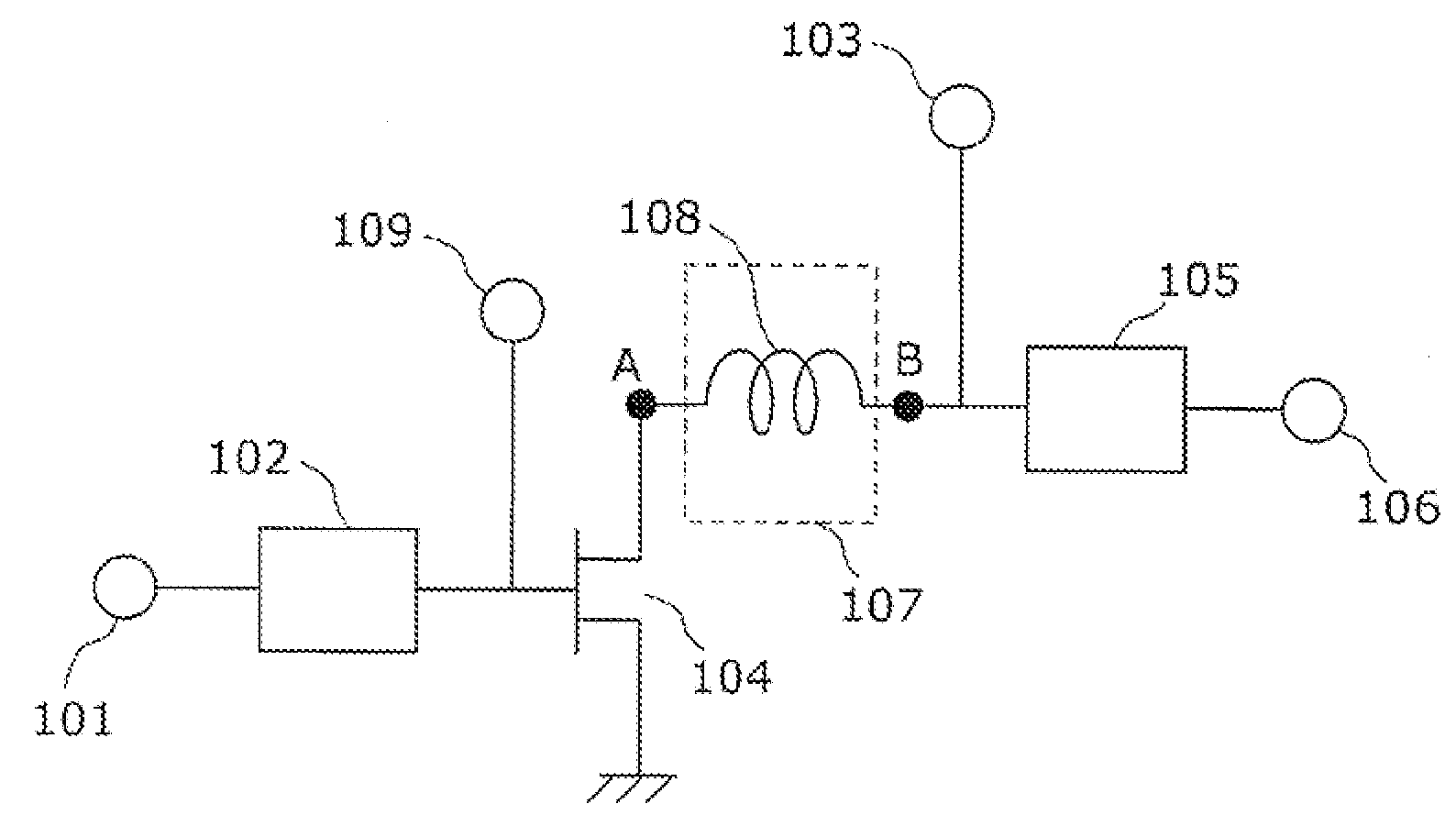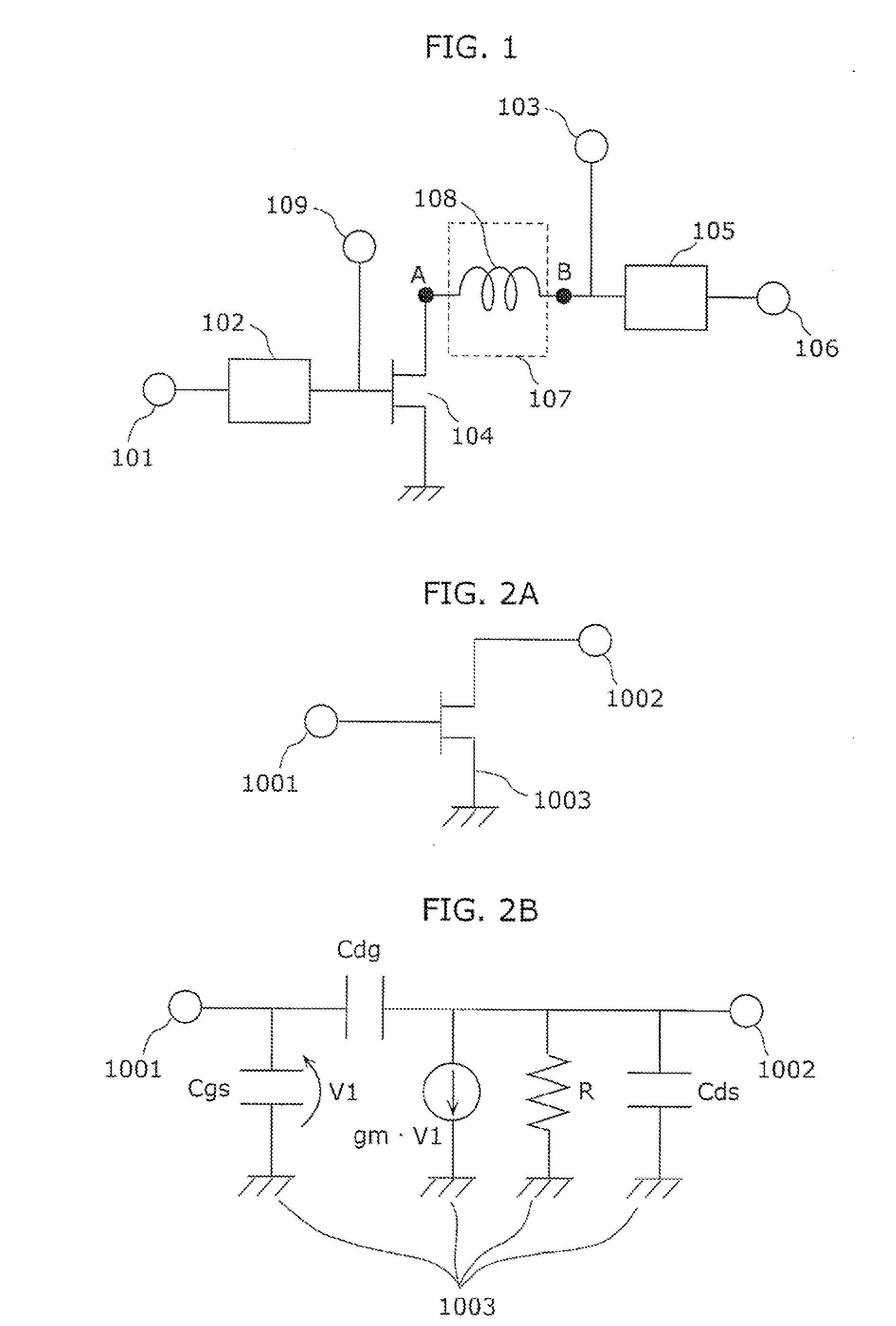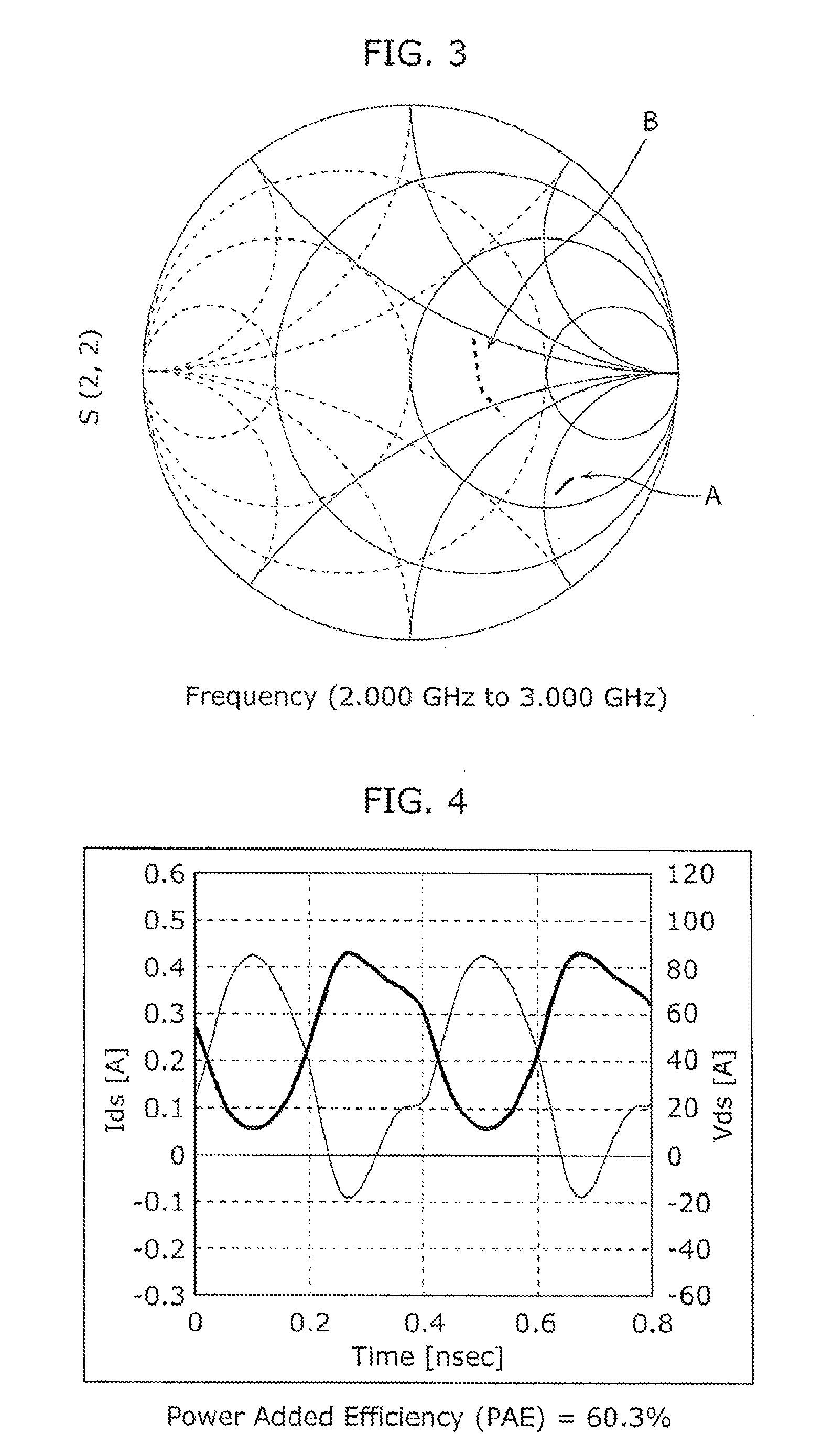High- frequency power amplifier
- Summary
- Abstract
- Description
- Claims
- Application Information
AI Technical Summary
Benefits of technology
Problems solved by technology
Method used
Image
Examples
first embodiment
[0054]FIG. 1 shows a circuit diagram of a radio frequency power amplifier according to a first embodiment of the present invention.
[0055]As shown in FIG. 1, the radio frequency power amplifier according to a first embodiment of the present invention has an input matching circuit 102, a transistor 104 which is an amplifying element, a reactance control circuit 107, and an output matching circuit 105. An input terminal 101 of the radio frequency signal is connected to an input side of an input matching circuit 102, and a bias terminal 109 is connected to an output side of the input matching circuit 102. Direct current voltage to drive the transistor 104 is applied to a gate electrode of the transistor 104 via the bias terminal 109. Also, a bias terminal 103 is connected to an input side of an output matching circuit 105. Direct current voltage to drive the transistor 104 is applied to a drain electrode of the transistor 104 via the bias terminal 103. Furthermore, an output terminal 10...
second embodiment
[0087]Next, FIG. 10 will be used to describe a second embodiment of a radio frequency power amplifier. FIG. 10 is a circuit diagram showing the second embodiment of a radio frequency power amplifier.
[0088]The difference between the first embodiment and the second embodiment of a radio frequency power amplifier is in the configuration of the reactance control circuit 107. Specifically, a microstrip line 401 is used as the reactance control circuit 107 in the second embodiment. Due to the fact that all other circuit configurations are identical to those of the first embodiment, and the components that are the same in FIG. 10 and FIG. 1 use the same reference signs, those descriptions will be omitted.
[0089]In the second embodiment, the reactance component can be adjusted depending on the line length and the characteristic impedance of the microstrip line 401 that forms the reactance control circuit 107. Therefore, as with the first embodiment, the line length and the characteristic imp...
third embodiment
[0090]Next, FIG. 11 will be used to describe a third embodiment of a radio frequency power amplifier. FIG. 11 is a circuit diagram showing the third embodiment of a radio frequency power amplifier.
[0091]The difference between the first embodiment and the third embodiment of a radio frequency power amplifier is in the configuration of the reactance control circuit 107. Specifically, a series resonant circuit including an inductor 501 and a capacitor 502 is used as the reactance control circuit 107 in the third embodiment. Due to the fact that all other circuit configurations are identical to those of the first embodiment, and the components that are the same in FIG. 11 and FIG. 1 use the same reference signs, those descriptions will be omitted.
[0092]Here, resonance frequency is defined as F, the parasitic capacitance of transistor 104 is defined as C, the inductance of inductor 501 in the reactance control circuit is defined as L, and the capacitance of capacitor 502 is defined as C2...
PUM
 Login to View More
Login to View More Abstract
Description
Claims
Application Information
 Login to View More
Login to View More - R&D
- Intellectual Property
- Life Sciences
- Materials
- Tech Scout
- Unparalleled Data Quality
- Higher Quality Content
- 60% Fewer Hallucinations
Browse by: Latest US Patents, China's latest patents, Technical Efficacy Thesaurus, Application Domain, Technology Topic, Popular Technical Reports.
© 2025 PatSnap. All rights reserved.Legal|Privacy policy|Modern Slavery Act Transparency Statement|Sitemap|About US| Contact US: help@patsnap.com



